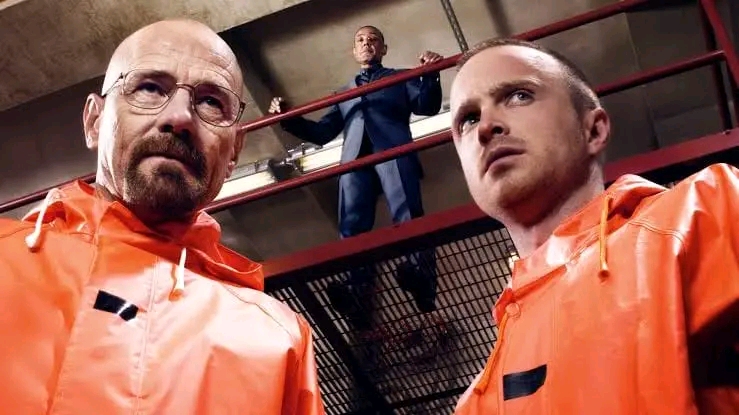
Breaking Bad: A Look Back at the Iconic Series That Redefined Television Drama

When “Breaking Bad” debuted on AMC in January 2008, few could have predicted the profound impact it would have on television and popular culture. Created by Vince Gilligan, the series followed the transformation of Walter White, a mild-mannered high school chemistry teacher turned methamphetamine manufacturer, as he descends into the criminal underworld. Over its five-season run, “Breaking Bad” not only garnered critical acclaim and a devoted fanbase, but it also redefined what television drama could be, setting a new standard for storytelling in the medium.
At the heart of “Breaking Bad” is the character of Walter White, portrayed by the remarkable Bryan Cranston. Walter’s journey from a desperate man facing terminal illness to a ruthless drug lord known as “Heisenberg” captures the complexity of the human condition. Cranston’s portrayal won him multiple Emmy Awards, and his transformation throughout the series is often cited as one of the greatest character arcs in television history. The series masterfully explores themes of morality, power, and the consequences of one’s choices, inviting viewers to grapple with the question: how far would you go for your family?
The supporting cast is equally impressive, with standout performances that contribute to the show’s depth. Aaron Paul as Jesse Pinkman, Walter’s former student and reluctant business partner, offers a nuanced portrayal of a troubled young man grappling with addiction and lost opportunities. Their dynamic ranges from mentor-mentee to an almost father-son relationship, highlighting the stark contrasts between their characters. Other notable performances include Anna Gunn as Skyler White, Walter’s strong-willed wife; Dean Norris as Hank Schrader, Walter’s brother-in-law and DEA agent; and Bob Odenkirk as Saul Goodman, the morally flexible lawyer who became a fan favorite and later spawned the spin-off series “Better Call Saul.”
The show’s writing and direction are hallmarks of its brilliance. Vince Gilligan and his team crafted a tightly woven narrative that combined tension-filled moments with dark humor and unexpected twists. Episodes such as “Ozymandias” and “Face Off” showcase the series’ ability to deliver shocking conclusions while remaining emotionally resonant. The cinematography, led by director of photography Michael Slovis, utilizes striking visuals and meticulous attention to detail, enhancing the storytelling. The use of symbolic elements, such as the recurring motif of the color green, serves to deepen the narrative and reward attentive viewers.
“Breaking Bad” also redefined the television landscape in how it approached serialized storytelling. It embraced character development and long arcs that encouraged binge-watching long before streaming culture became the norm. With its compelling narrative and richly developed characters, the series set a benchmark for subsequent shows, paving the way for other acclaimed dramas such as “The Sopranos,” “Mad Men,” and “Game of Thrones.” It generated critical discussions about anti-heroes in television and prompted audiences to reevaluate their perceptions of morality.
Even years after its finale in September 2013, “Breaking Bad” continues to resonate. Its cultural impact can be seen through numerous references in popular media, academic discussions, and even online memes. The show has ignited conversations about ethical dilemmas and the complexities of human behavior in ways that few other series have achieved.
Moreover, the legacy of “Breaking Bad” has lived on through various adaptations and spin-offs, most notably “Better Call Saul.” This prequel series explores the origins of Saul Goodman, providing depth to the universe created by Gilligan and allowing fans to further immerse themselves in the complexities of the characters.
In conclusion, “Breaking Bad” stands as a landmark achievement in television history, a series that not only entertained but also challenged perceptions and sparked meaningful conversations. Its blend of storytelling, character development, and visual artistry reshaped the drama genre and inspired a new generation of creators. As audiences reflect on the iconic series, they are reminded of Walter White’s haunting words: “I am not in danger, Skyler. I am the danger.” The series invites us to question the facades we wear and the lengths we are willing to go when confronted with life-altering decisions. In every sense, “Breaking Bad” has earned its place as a defining piece of cultural art, leaving an indelible mark on television and storytelling.





